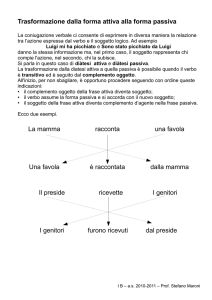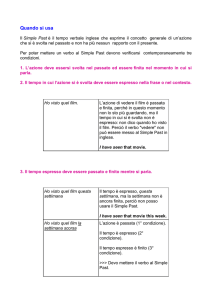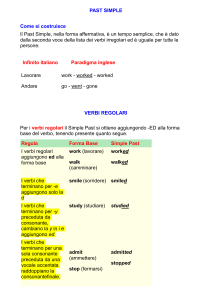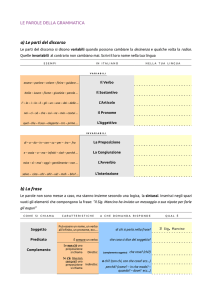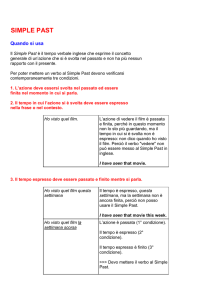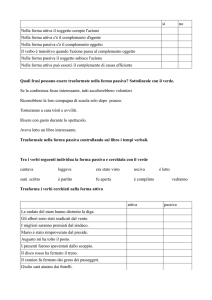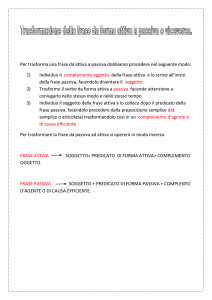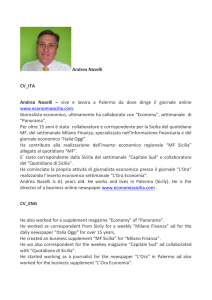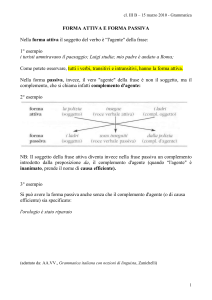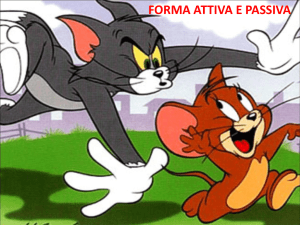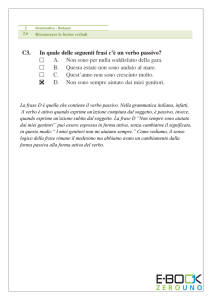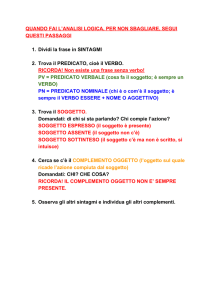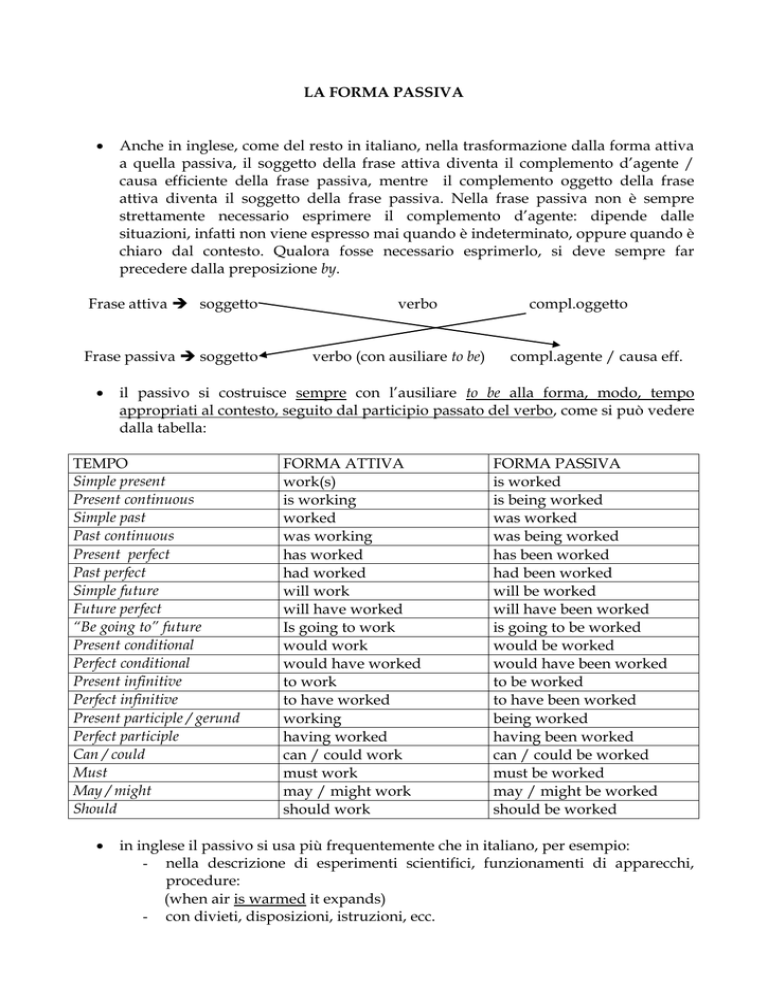
LA FORMA PASSIVA
Anche in inglese, come del resto in italiano, nella trasformazione dalla forma attiva
a quella passiva, il soggetto della frase attiva diventa il complemento d’agente /
causa efficiente della frase passiva, mentre il complemento oggetto della frase
attiva diventa il soggetto della frase passiva. Nella frase passiva non è sempre
strettamente necessario esprimere il complemento d’agente: dipende dalle
situazioni, infatti non viene espresso mai quando è indeterminato, oppure quando è
chiaro dal contesto. Qualora fosse necessario esprimerlo, si deve sempre far
precedere dalla preposizione by.
Frase attiva soggetto
Frase passiva soggetto
verbo (con ausiliare to be)
compl.oggetto
compl.agente / causa eff.
il passivo si costruisce sempre con l’ausiliare to be alla forma, modo, tempo
appropriati al contesto, seguito dal participio passato del verbo, come si può vedere
dalla tabella:
TEMPO
Simple present
Present continuous
Simple past
Past continuous
Present perfect
Past perfect
Simple future
Future perfect
“Be going to” future
Present conditional
Perfect conditional
Present infinitive
Perfect infinitive
Present participle / gerund
Perfect participle
Can / could
Must
May / might
Should
verbo
FORMA ATTIVA
work(s)
is working
worked
was working
has worked
had worked
will work
will have worked
Is going to work
would work
would have worked
to work
to have worked
working
having worked
can / could work
must work
may / might work
should work
FORMA PASSIVA
is worked
is being worked
was worked
was being worked
has been worked
had been worked
will be worked
will have been worked
is going to be worked
would be worked
would have been worked
to be worked
to have been worked
being worked
having been worked
can / could be worked
must be worked
may / might be worked
should be worked
in inglese il passivo si usa più frequentemente che in italiano, per esempio:
- nella descrizione di esperimenti scientifici, funzionamenti di apparecchi,
procedure:
(when air is warmed it expands)
- con divieti, disposizioni, istruzioni, ecc.
-
-
a)
b)
c)
d)
(smoking is not allowed here)
quando si vuole evidenziare un fatto più che l’autore / l’origine del fatto
stesso:
(The exhibition will be held from April to the end of June)
in inglese il “si passivante” italiano si rende, di solito, col passivo:
(so many things are said about him!)
Tuttavia va ricordato che il “si” della costruzione impersonale italiana può essere
reso in inglese in molti modi:
you if you eat too much you’ll get fat
(si usa nel linguaggio informale ed è simile al “tu” generico italiano)
we we are organizing a play at school
(si usa quando il parlante se sente coinvolto nella situazione)
they / people they / people will laugh at you if you do that
(si usano in senso generico e quando il parlante si sente escluso)
one one always tries to be helpful
(si usa nel linguaggio formale, soprattutto in affermazioni categoriche, di
principio, ecc.)
Il passivo con i verbi seguiti da preposizione:
Quando un verbo alla forma attiva è seguito da preposizione, questa viene sempre
mantenuta anche nella forma passiva:
-
we have already dealt with this problem
this problem has already been dealt with
Il passivo con i verbi che reggono il doppio complemento (indiretto + diretto):
i verbi che possono essere seguiti da un doppio complemento come to bring, to give, to
lend, to offer, to promise, to send, to tell, ecc., alla forma passiva hanno preferibilmente il
complemento indiretto come soggetto:
- the director will offer him the role of Othello
he will be offered the role of Othello (by the director)
- they didn’t tell Laura the truth
Laura wasn’t told the truth

